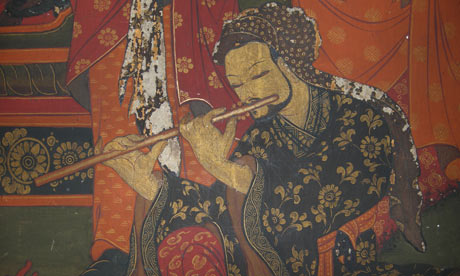Reclusive kingdom located between India and China has asked for advice on preserving masterworks from the 16th-19th centuries
Dalya Alberge
Courtesy: The Observer (http://observer.guardian.co.uk/)

A 17th-century paintings of the Lama Lhakhang in Trongsa dzong.
British art experts have been given unique access to the hidden heritage of the Himalayan kingdom of Bhutan, including spectacular 16th- to 19th- century wall paintings from its 2,000 temples and monasteries.
Specialists from the Courtauld Institute have been amazed by the exquisite quality and technical sophistication of paintings that were largely unknown and unrecorded in the west. Professor David Park, from the Courtauld, said: “The wall paintings are absolutely stunning. Some of the earlier examples, especially, are extraordinary.” Continue reading Bhutan’s endangered temple art treasures

